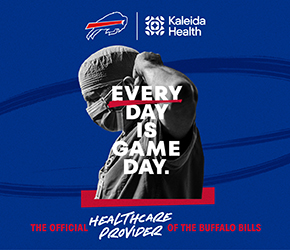Health Challenges and Trends

By Annette Pinder
As we turn the page on 2025 and look ahead to 2026, it’s time to pause and reflect on the state of our health, both in Western New York and across our nation.
Here in Western New York, many residents face the same chronic disease risks that are being seen across the nation, including high rates of obesity, hypertension, and substance use. We are also observing that life expectancy and disease burdens vary significantly by neighborhood, underscoring the influence of social and environmental factors. Western New York also faces challenges related to air quality and respiratory health issues. For instance, the New York State Department of Health data confirms that asthma and chronic lower-respiratory-disease hospitalization show disparities by race and ethnicity. With the global resurgence of measles and other infectious diseases, it is more important than ever to stay current with vaccinations. We also continue to grapple with stretched resources, reduced staff, higher turnover, and increasing demand for services, along with shortages of workforce in primary care, behavioral health, and other areas.
Nationally, several positive trends noted below could significantly change how we prevent, diagnose, and treat diseases in the near future.
- Personalized medicine. The American Association for Cancer Research predicts that precision therapies, such as targeting genetic variants and cell therapies, will expand beyond rare cancers into more common diseases. According to Lifebit, the development of genomics, proteomics, and metabolomics, combined with AI analytics, will continue to transform our understanding of individual risk and treatment.
- Breakthroughs in diagnostics. The NIH reports that we now have a blood test for Alzheimer’s disease that is 90% accurate in older adults, potentially enabling much earlier diagnosis. And the World Economic Forum states that cancer-screening tests are emerging that can detect multiple early-stage cancers from a single blood draw.
- Advances in cancer, metabolic disease, and more. A clinical trial led by Stanford Medicine has shown promising results for cell-based therapy in high-risk lymphoma. Discoveries involving the hormone GLP-1, which plays a crucial role in metabolic regulation, were awarded the 2025 Breakthrough Prize in Life Sciences, confirming that the treatment of metabolic diseases is undergoing a significant transformation.
- Digital health and remote monitoring are gaining momentum. Wearables, telemedicine, VR/AR for training and treatment, and AI diagnostics are already transforming how we access care and detect health issues early.
What can we do to stay ahead of, and benefit from, these trends?
- Discuss precision screening options, new tests, or treatments with your provider that may suit your needs.
- Recognize that as diagnostic tests improve in sensitivity, early detection becomes even more crucial.
- Consider how remote monitoring, wearable devices, or telehealth services can enhance your healthcare.
- While breakthroughs are exciting, stay realistic; they may not be widely available yet, and costs could still be high.
- Advocate for your health systems and local policymakers to invest in infrastructure—such as public health workforce, digital health, and equitable access—to ensure this wave of innovation benefits everyone.











